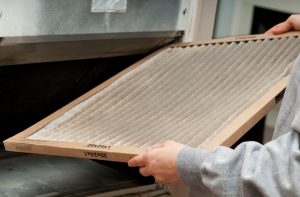Is your HVAC unit ready to deal with the heat of a Florida summer? If it isn’t, you can follow these easy steps to get it ready to go quickly.
Quick Steps to Get Your HVAC Unit Ready for Summer
- Clean or replace the filters. This simple step takes just a few minutes but is one of the most common reasons for air
conditioner failure. How often will depend on your system, and failing to change it can restrict air flow, reduce your system’s efficiency and increase dust in your home. This involves simply removing the old filter and cleaning or replacing it.
- Clear away any debris at the base of the condenser. Does it have a drain? If so, make sure it is cleaned out and can get moisture out of the HVAC unit. If you don’t, the condensation can back up and cause the coils to freeze, Start by shutting the power off at the breaker, then remove the side and top panels or grilles on your outside unit. Cover any exposed electronic wires and circuits with a garbage bag.
- Clean the large fan inside if there is any debris on it using a vacuum and rag. Tighten any mounting bolts that have loosened up. If there are any oil ports, make sure you add a few drops of a light weight oil or spray a lubricant into the ports.
- Clean the condenser coils. The condenser coils act as a radiator and release heat from inside your home. If the coils are covered with dust, dirt and debris, that heat is trapped, making your system work harder to cool your home. After you’ve finished cleaning the fan, you can then use a soft brush on your vacuum to carefully clean the coils. If you accidentally bend a fin, you can carefully bend it back into place. If you have stubborn debris, you may need to use a coil cleanser to clean from the inside outward.
- Clean up any remaining water, then reassemble the cover. Are there weeds or vines restricting airflow through the condenser? If so, trim them back or remove them. Check the pipes or tubes of refrigerant going into the home. If the insulation has become frayed or is missing, replace it. Once the unit has had an opportunity to dry out completely, turn the power back on by turning your thermostat off, turning the power on at the disconnect and main power panels, then switch the thermostat to cooling mode.
That’s it! If you’re concerned that some of these steps seem too difficult or if you just don’t have enough time available to work on these preparations, please feel free to contact us today.





Leave a Reply